Your takeaway:
- Start your living room transformation with some living plants.
- The trick is to naturally decorate the space, so your interior style doesn’t change too dramatically.
- Natural lighting plays an important part in any living room because it helps to produce a relaxing atmosphere.
- For the selection of dirt, soil, or fertilizer, you could start it with a DIY approach or choose the most suitable one from the market.
- You could also use the best indoor planter ideas to make your living room look more elegant and
- Bringing in a focal point in your living room is a good idea to prevent any boredom or dullness for your guests too. To produce a fresh focal point, you could start with the simplest ones, such as a flower planter.
- You could also use a potted tree to place over your couch or sofa. The trick is to contrast the color of your furniture with the green one.
- To produce a harmonious interior, you should vary the natural color of the walls, the carpets, and the wood details.
- Choose fabrics for curtains and covers that can blend with your living room design for a more immersive look without compromising your budget either.
- Adding some decorative objects around is also a fine idea as it prevents any monotony from happening to your interior.
- Don’t let people think you have a boring interior; give them something green to look at!
And enjoy some natural ingredients for your home decorating needs about Indoor Planters
Bringing plants inside the room comes with countless benefits. Much scientific research has proved that it helps create a more relaxed and refreshing atmosphere for the people living inside.
Furthermore, you can also consider enhancing your home interior design since each vegetation has its own uniqueness, which probably will complement your room interior.
You can apply the idea of incorporating plants into your house to any room, particularly the living room, which tends to be the area to spend your family time. By having a garden in your living room, you wouldn’t just enjoy the family-togetherness but also a lovely display of interior design and its therapeutical effects.
Thus, to create a more attractive garden for your living room, here we have a list of 10 Living Room Garden Ideas To Improve Your Interior Appeal. Following previous garden ideas already published in the channel, Simphome presents you with the list.
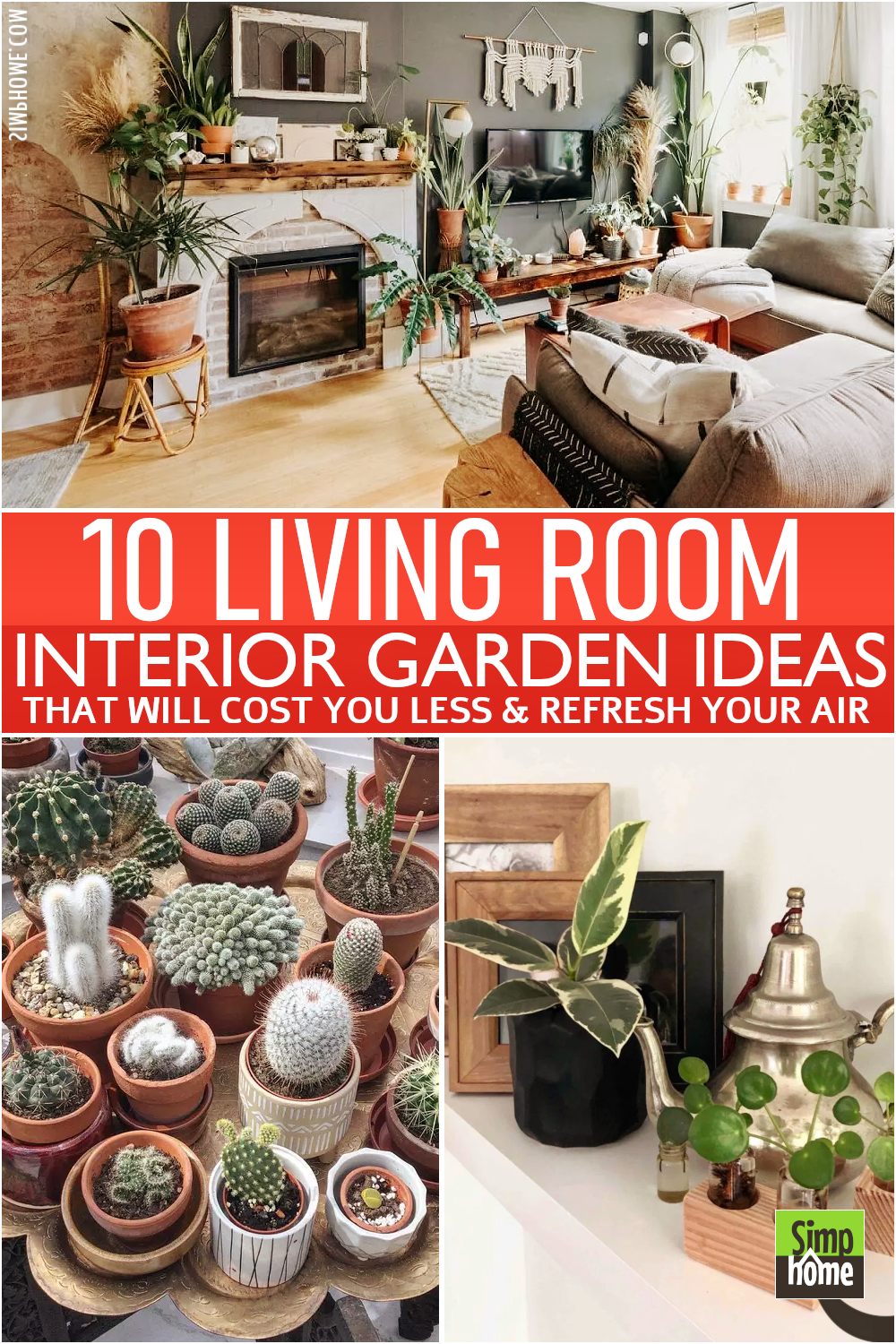
🔊10 Living Room Garden Ideas to Improve your Interior Appeal Video:
List Entries:
10. A Terrarium Garden for the living room idea
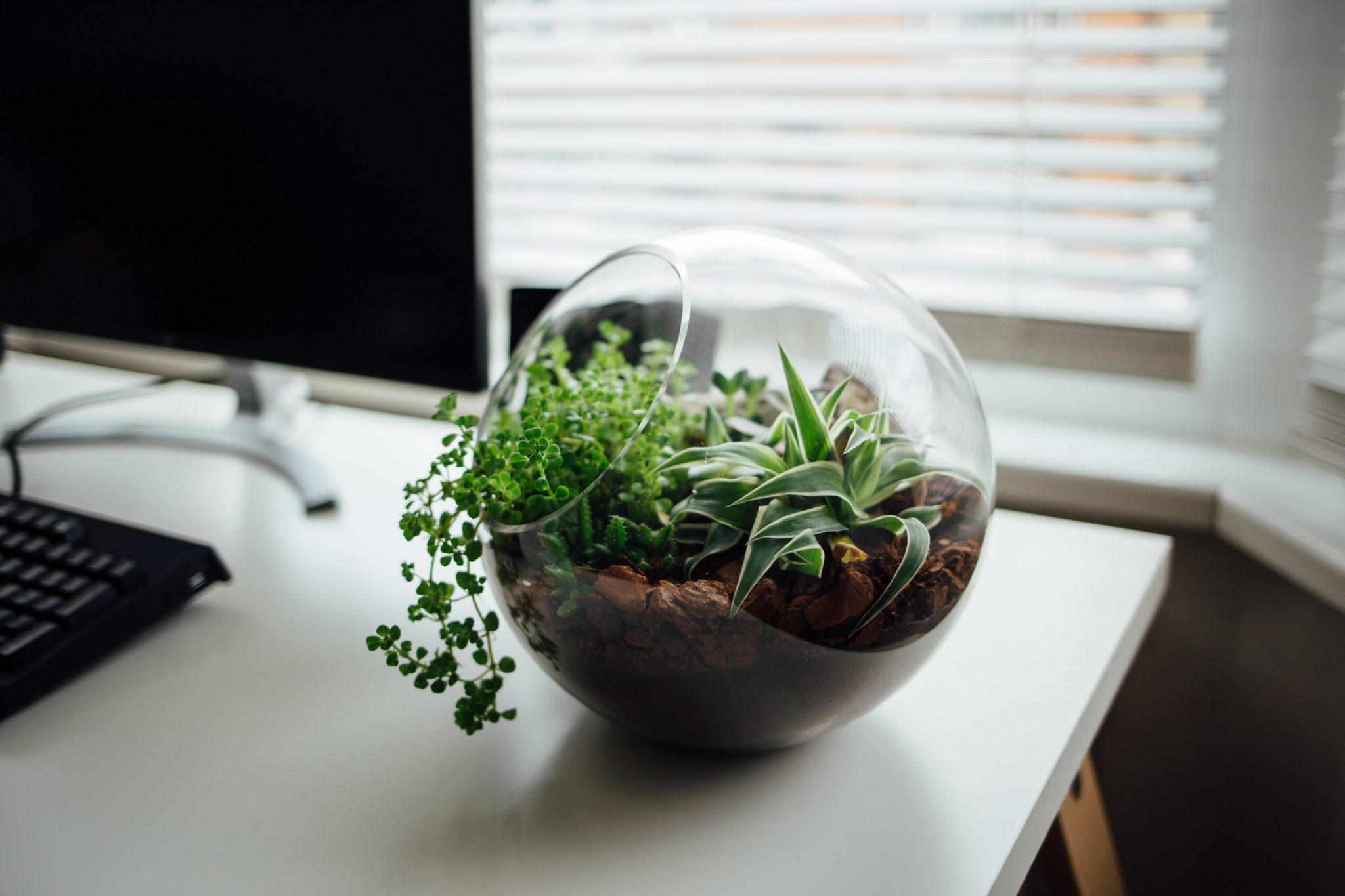 An indoor garden doesn’t always need to take up large space. You can opt for a mini pant world such as a terrarium.
An indoor garden doesn’t always need to take up large space. You can opt for a mini pant world such as a terrarium.
To replicate the idea, you merely need a few glass displays with an opening on top or side to ensure plenty of ventilation. In addition, don’t forget to consider the size.
After that, fill the glass display with some gravel and pebbles and your favorite tiny succulents or air plants. You can also go for both combinations. Arrange them as your preference.
To maintain the terrarium garden, make sure the terrarium gets a sufficient amount of water –they are typically don’t need much water. You can spray through the plants’ surface once in a while. Also, let them receive enough light, whether natural or artificial sources.
9. The ‘Green’ Shelf Idea
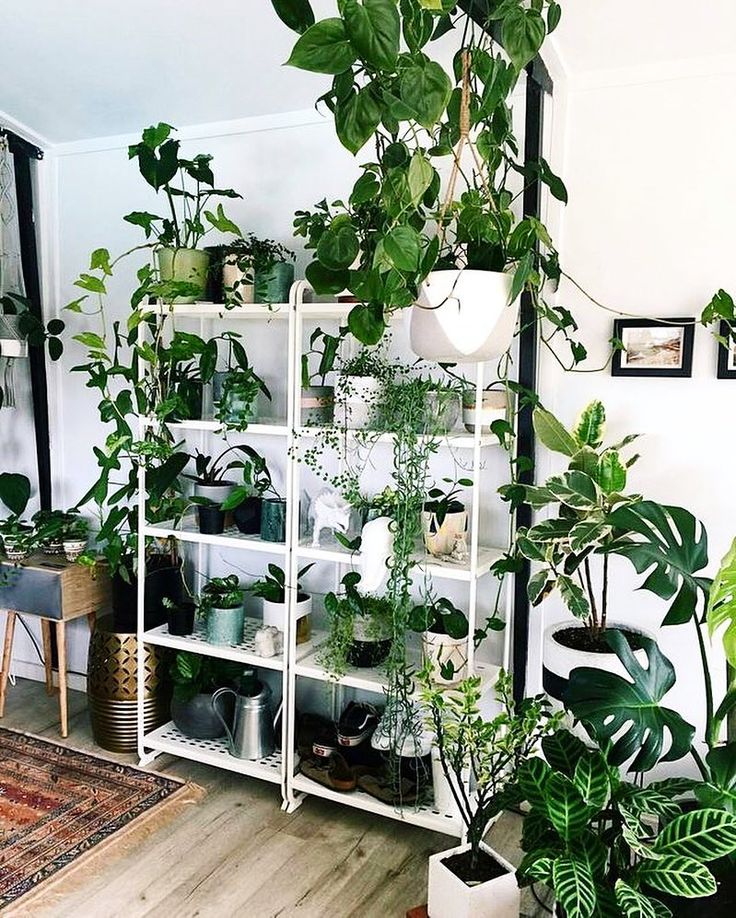 Suppose you don’t have much space available, no need to worry. Going vertical would be a thing to put into your consideration. Moreover, it’s an excellent idea to decorate your blank-space wall.
Suppose you don’t have much space available, no need to worry. Going vertical would be a thing to put into your consideration. Moreover, it’s an excellent idea to decorate your blank-space wall.
You can display your vegetation in shelving units. Whether you use your old rack, purchase a new one, or DIY it, that’s totally all up to you. Know which one will be the best work for you by taking these several factors into account: time, energy, and money.
Once the shelves are ready, it’s time to load in the plants. Mix and match various shapes and sizes of plants. There are plenty of options to try. An example is placing the pop trailing species on higher shelves to give them plenty of space to tumble down. In addition, try to vary the type of plants in one shelving area.
8. A Kingdom of Mini Succulent Idea
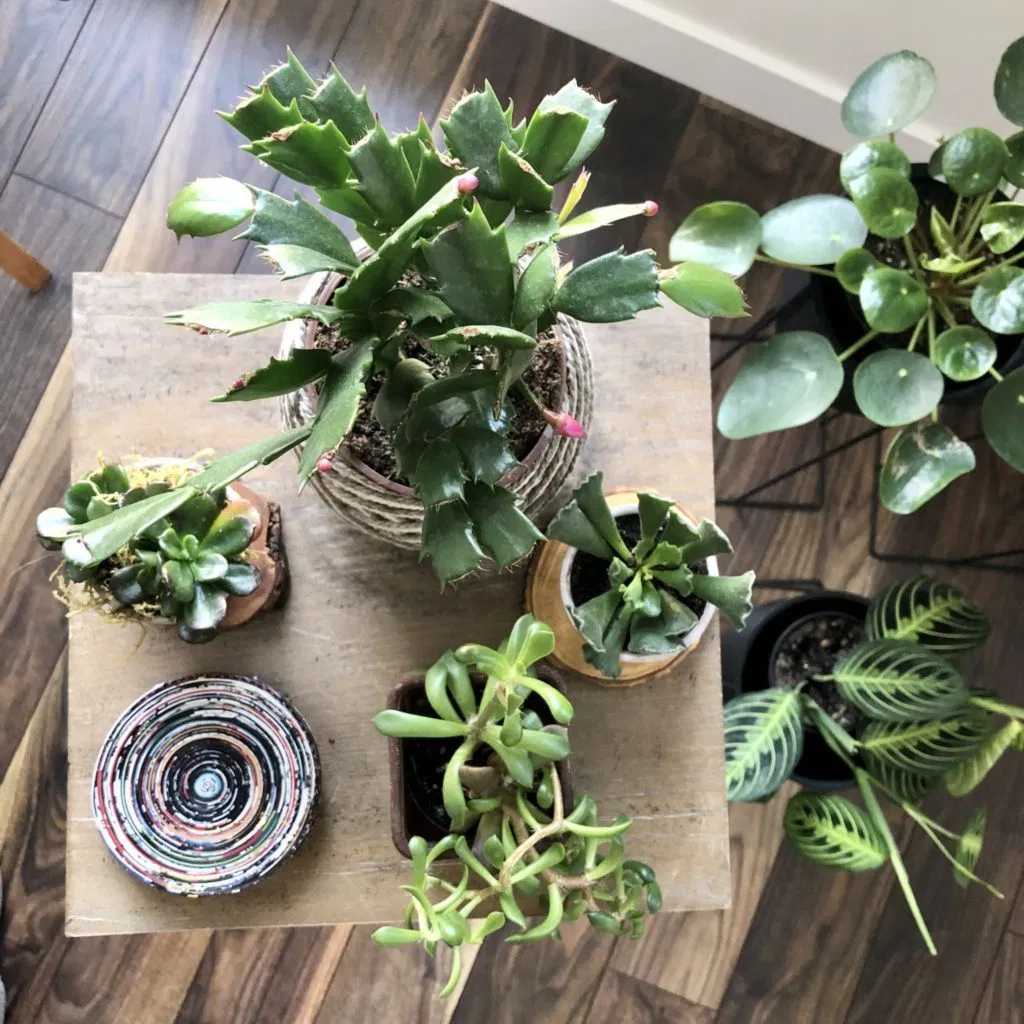 Having only one-in family of plants isn’t always bad. It wouldn’t be boring if it’s come into succulent. You can have such a succulent kingdom-themed for your indoor garden.
Having only one-in family of plants isn’t always bad. It wouldn’t be boring if it’s come into succulent. You can have such a succulent kingdom-themed for your indoor garden.
There are various types of succulents. Several types of popular indoor succulents are buro’s tail, pincushion cactus, panda plant, jade plant, zebra plant, Roseum, and snake plant.
They are also available in different sizes. Thus, it will allow you to use every tiny empty corner in your room. Besides, they are less-water consuming, which means good for you who won’t be bothered thinking about the watering schedule.
7. Bring Various Shape of Cactuses and Spark the Old vibe
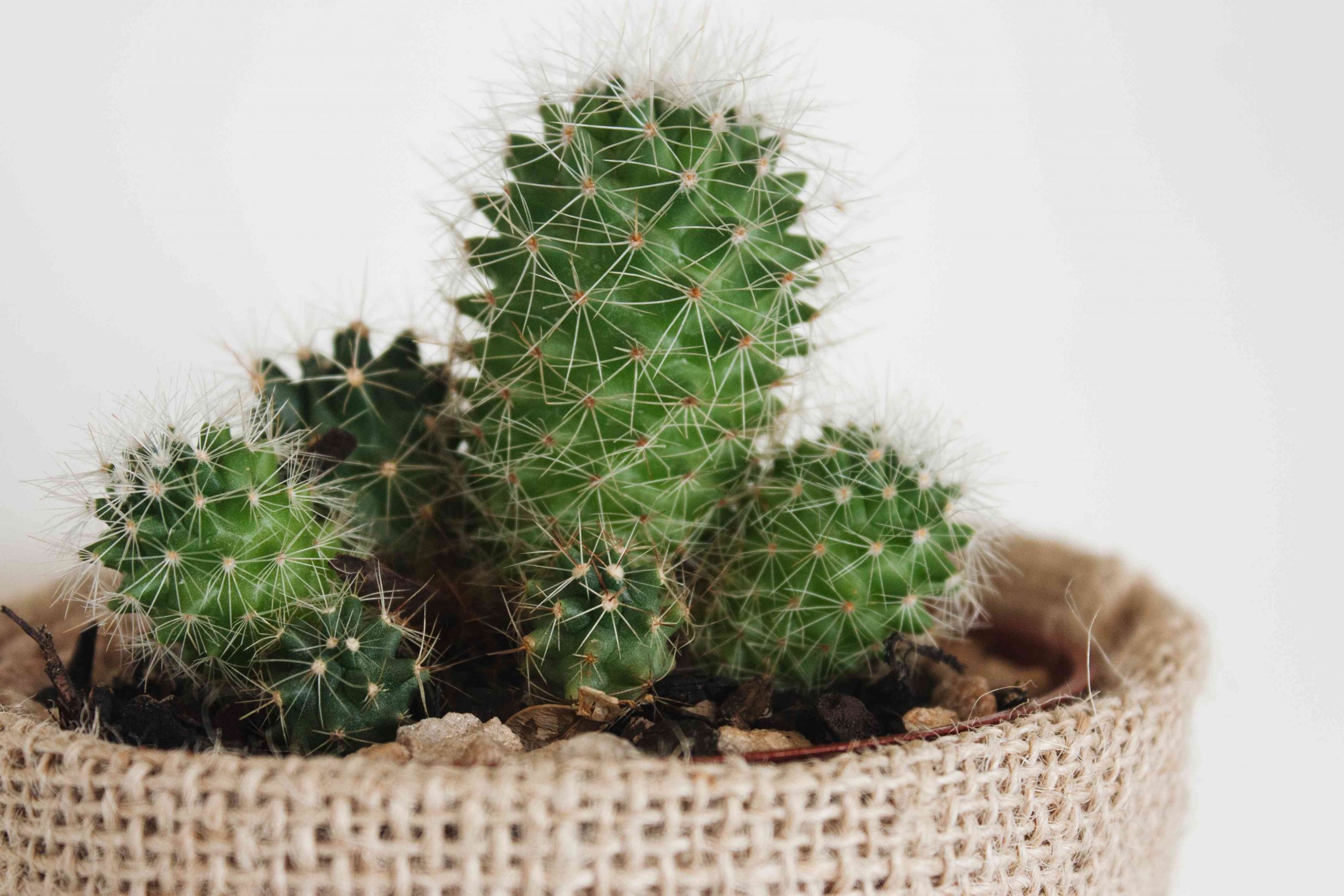 Choosing cactus to create a single variety indoor garden is also another recommendation. Cactus has a unique look that easily catches people’s eyes. Try to incorporate terracotta pots and cacti. They are a simple but striking display. Bring some different shapes and sizes of cactuses to your indoor space.
Choosing cactus to create a single variety indoor garden is also another recommendation. Cactus has a unique look that easily catches people’s eyes. Try to incorporate terracotta pots and cacti. They are a simple but striking display. Bring some different shapes and sizes of cactuses to your indoor space.
To achieve the ideal result, you should also be creative with your interior landscape. Different cacti you can select for the project, such as Bunny Ears Cactus, Chin Cactus, Saguaro Cactus, Old Lady Cactus, and star cactus.
With the help of some varieties and soft-colored gravel, you can produce a river-like feature in your living room garden. The gravel will make the display look like it flows like water down the pot. You could also plant the cactus into the gravel to turn your indoor landscape design attractive or fresher.
6. No-Soil Collection
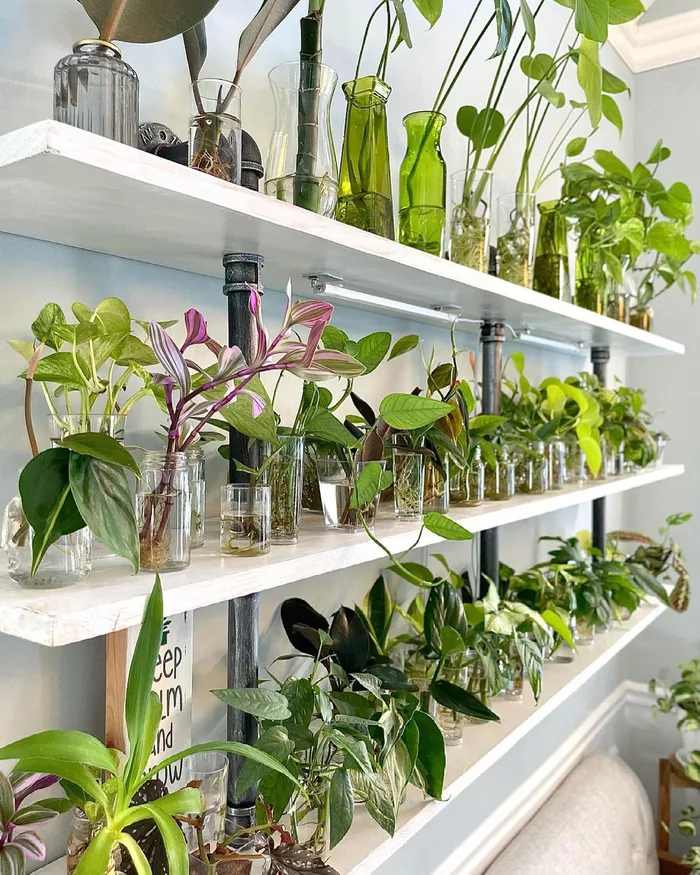
By applying this method, you enjoy the beautiful glass-plant combination and the impressive roots growing firm on all sides. In addition, taking care of this type of garden wouldn’t be a difficult task. All you need to do is change the water regularly.
To begin the cultivation, you can just cut some part of the plant then put it into the water. It will start to root in a few weeks later. When the plants get bigger, you can grow them in the soil or merely change the glass size and let the plant grow further in the water.
5. An Indoor Plant Gallery for your interior
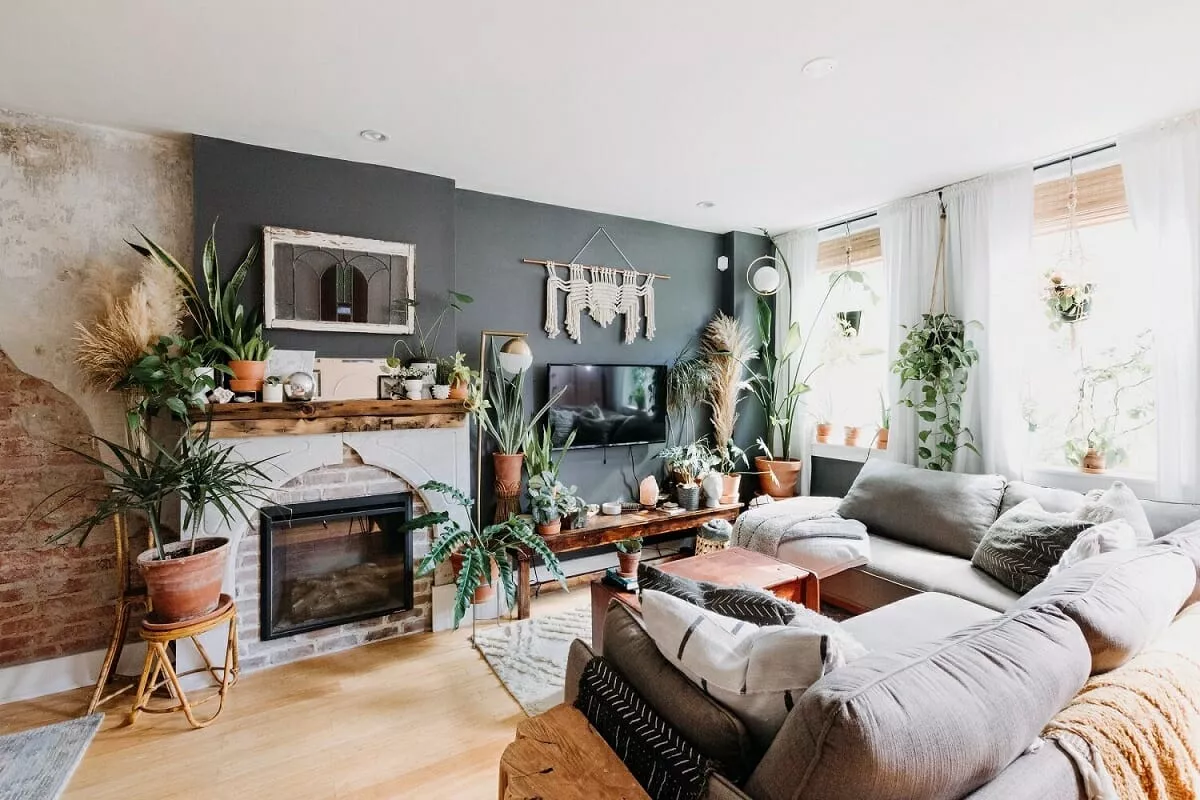 If you ever profoundly think about plants’ existence, they can actually be possed as living art. Thus, placing some of them inside your room could help you create a living gallery.
If you ever profoundly think about plants’ existence, they can actually be possed as living art. Thus, placing some of them inside your room could help you create a living gallery.
To make your gallery more enchanting, display different species and sizes of plants. Also, consider various positioning. You can place them on the top of the floor’s surface, support them with a plant stand, or hang it.
4. Play with the pot
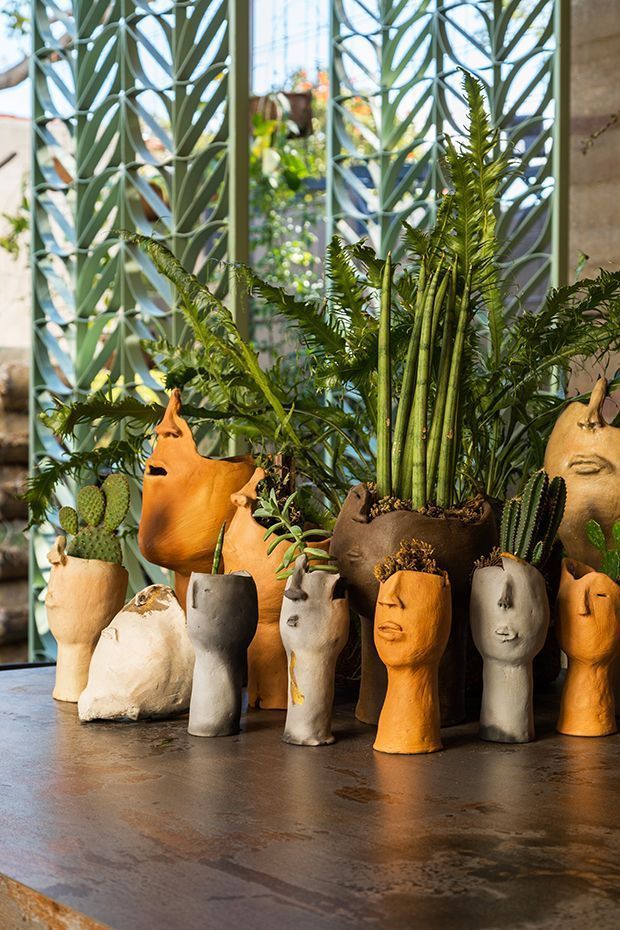 Besides the plants, you can have a stunning indoor garden by putting more effort into the pot. Try to complement your indoor garden with unique and anti-mainstream pots.
Besides the plants, you can have a stunning indoor garden by putting more effort into the pot. Try to complement your indoor garden with unique and anti-mainstream pots.
Nowadays, you can easily find numerous such pot types online or in stores near you. Many artists also start creating pots as their artwork, adding more value to the pots.
A unique pot made by an artisan might sound pricey. Yet, don’t worry. The price remains vary. Thus, you can still purchase some which meet your budget.
3. Spark the interior with an Indoor Spring
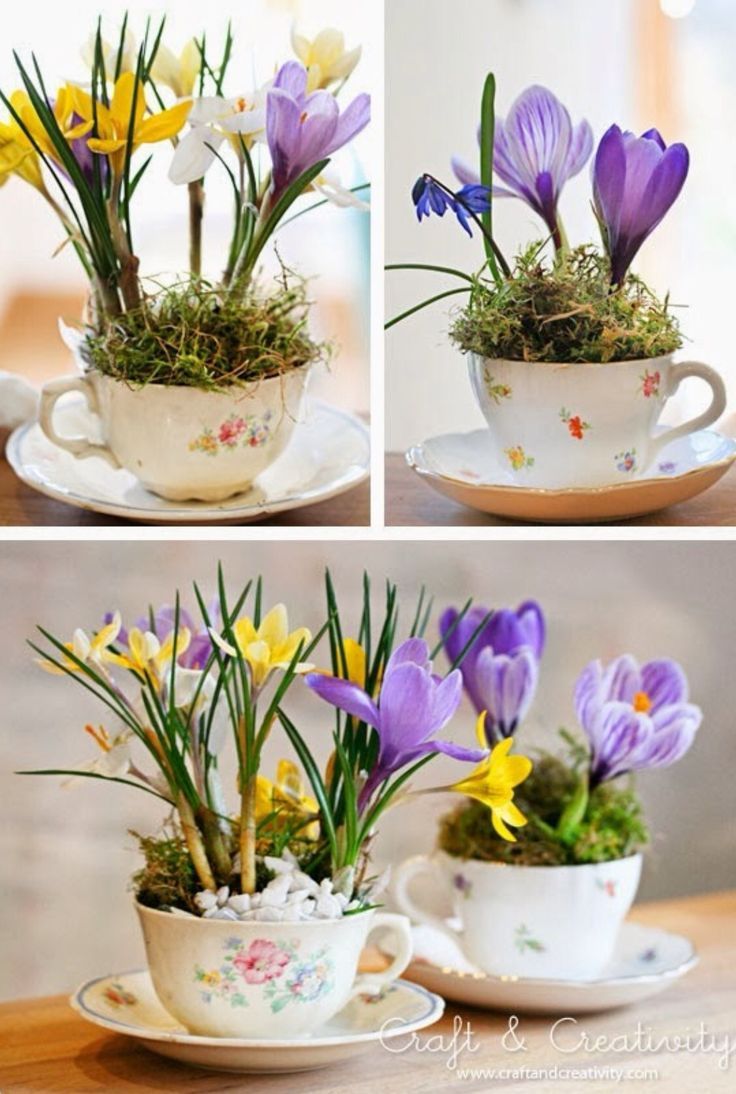 Bring in some bulbs would be perfect if you’re after spring cheer. You can grow them in different-colored pots and place them around the home.
Bring in some bulbs would be perfect if you’re after spring cheer. You can grow them in different-colored pots and place them around the home.
There are plenty of favorite bulbs, such as narcissus and hyacinth. They do not only look attractive, but they also give a pleasant fragrance. As a result, they will brighten your living room atmosphere.
2. Featured A Timeless Bonsai
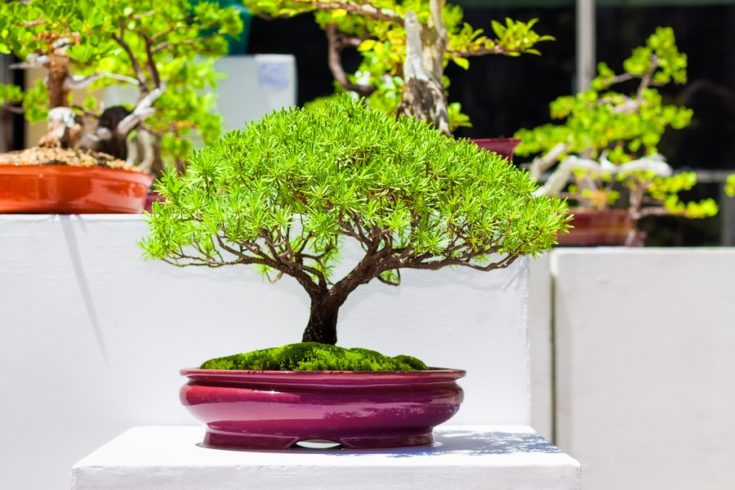 Bonsai is an art of growing ornamental, artificially dwarfed trees or shrubs. It was originally from Japan, and many people have practiced it for centuries.
Bonsai is an art of growing ornamental, artificially dwarfed trees or shrubs. It was originally from Japan, and many people have practiced it for centuries.
Since it’s typically an “old” art, choosing bonsai for your in-home garden wouldn’t create such an outdated design in your room. Even more, it fits well with your modern-minimalist home.
As a beginner, you may opt for varieties such as juniper, yew, and pine which grow slowly and are adaptable to different environments.
Lastly, No 1. Build your indoor garden and divider simultaneously
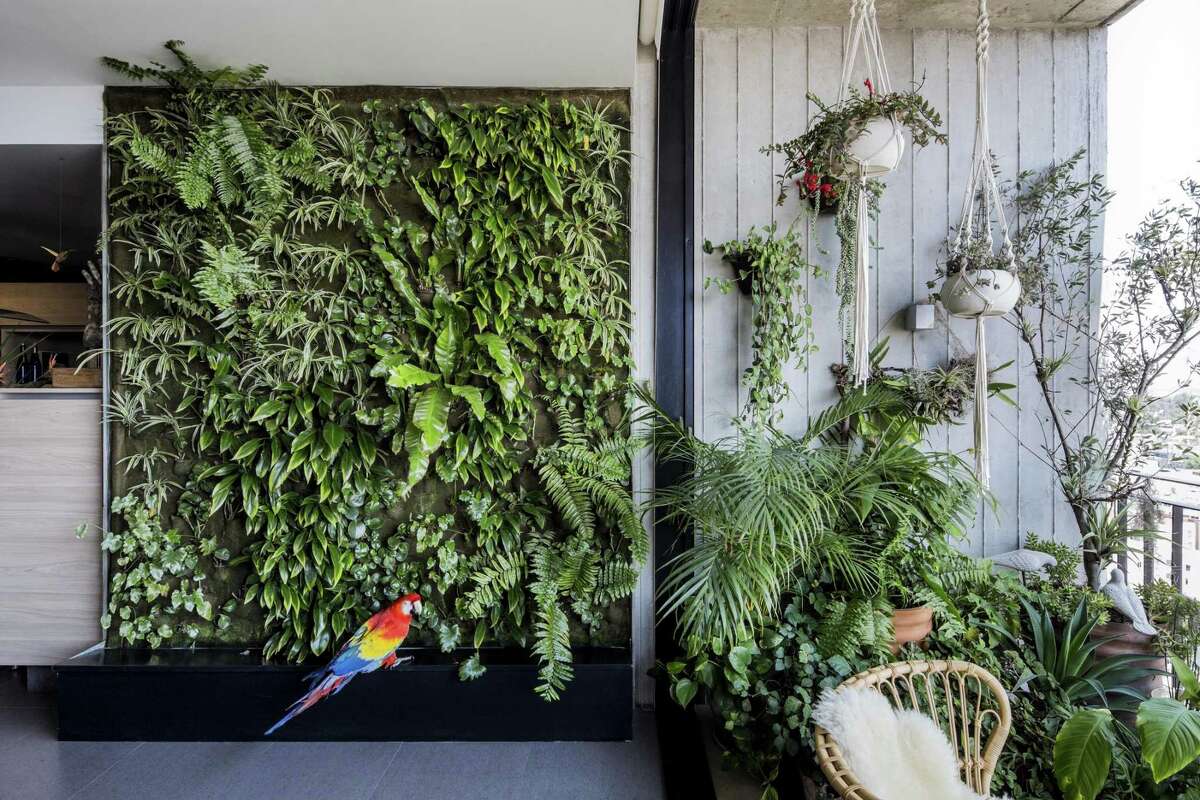 Besides performing as interior appeal, this idea would give you a solution to zone an open-plan living space.
Besides performing as interior appeal, this idea would give you a solution to zone an open-plan living space.
To build such a plant divider, use a group of big-size container plants. Then place them close to each other in one line. Go for upright, multi-stemmed types of Ficus, such as banjo fig, java fig, or Ficus elastica.
Combining varying leaf shapes, colors, and details would be interesting. Moreover, those tall beauties still allow the daylight sunshine to enter the other parts of the room gently.
Here is the end of the list. Hopefully, these 10 living room garden ideas inspire you to build your lovely and comfortable home. You can choose one or mix some ideas above. That’s totally up to you. Don’t waste your time. Go give it a shot!
Relevant questions:
How do I make my room look like a garden?
Instructions:
- Start with a few plants and pots.
- Dampen the soil, and then you can start adding soil.
- If you have a balcony, patio, or small garden, consider adding some more plants to it.
- This home decorating idea is also applied to outdoor areas like patios or balconies.
- A glass container with plants placed on the balcony can give your interior an appealing look while adding some natural elements as well.
- You could add a pot of a plant and place it on your table or couch while keeping in mind that they shouldn’t be too close to the floor.
- Take care to decide what the weather is like and how much sunlight you require.
Is this living room garden idea suitable for those who live in apartments or condos?
The answer will depend on the audience and the room. Anyone who lives in an apartment or condo should have a spacious garden, but to make it look more attractive, you may also need to think about decorating the space.
Instructions:
- After assessing your living environment, you can start planting plants.
- A terrarium is also a good living room decoration idea for those living in high buildings with no garden space.
- You could start with a tiny plant to test if this isn’t a good decorating idea for your home.
- It is suggested that if you live in a modern environment, you add a wooden base or some pottery to the design to make it look more stylish.
- You could also add a potted plant on your table and place other decorative items along with them.
- Don’t forget about the tall plants; you could place them over your ceiling for a more natural taste.
- For people who aren’t living in apartments, it is suggested that they use green curtains with matching wall art and pillows to enhance their living room design with natural elements.
Do these living room plants require any sunlight?
Yes, they need sunlight, and you should place them in places where they can receive natural light. If you’re placing them on a balcony or patio, they might not receive any direct sunlight, so that’s why you need to adjust them accordingly.
How do you decorate an indoor garden?
The best to do it is first by observing how much funds you can spare for the project, and then from there, you could start with some plants and flowers. Stand in the center of your living room and take a look at the space altogether. If you’re decorating it for the first time, you might have to place some pots of flowers on your floor, windowsill, or tables.
What is an indoor garden called?
This object is another glasshouse where the plant’s owner arranged his or her collection in a pleasing configuration.
Synonyms for this call are A conservatory, A hothouse—the type of glasshouse, greenhouse, nursery.
How do I build a cheap indoor garden?
One thing, a cheap indoor garden won’t look outstanding, and you need to keep this in your mind. Secondly, you’ll need to think about the placement of the plants and other decorative items.
There are some key points to consider when you build a cheap indoor garden:
- If you’re building a conservatory or greenhouse, then it is suggested that you build a modern one as they give an appealing look.
- You need to keep in mind that it will cost you more money if you want it in your garden; that’s why if you want to build one, then don’t hesitate to make improvements here and there.
- For this living room idea to work, consider adding some panes of glass for more natural light. So do spend your money wisely before constructing a cheap indoor garden.
- Many people tend to use plants that are easy to grow for their living room decoration idea.
- You should also consider the temperature and humidity so that your plants can flourish.
- It is essential that you be keen on this idea if you live in a high building because there aren’t any gardens where you could place your plants.
- Plant pots are essential for this living room idea; if you’re unable to get them, then go for some window boxes or planters.
- If you want that focal point in your house, then, by all means, start with a huge flower pot so that guests won’t get bored while they are in your home. Also, this will create an excellent mood as well.
How do you make a mini indoor garden?
It will depend on how “mini” the indoor garden would be, which means we will talk about the current size of available space you want to convert as a new indoor garden.
Relevant instructions:
- Decide on a few plants or flowers that you find attractive to start with the layout.
- You could place them on a table or your entryway, and you don’t need to make it look like a garden.
- It is recommended that you get decorative items such as vintage images of flowerpots, buckets, vases for those new to this idea.
- If you decide to add other decorative items such as beads and stones without caring much about the design, your room will be more appealing.
- You can select from a wide variety of plants; if in doubt, perhaps you should think about using accent plants.
What are accent plants?
Accept plant is a trendy, low-maintenance choice that adds visual or olfactory interest to a room and offers seasonal color.
When choosing your accent plants:
- No 1. Be careful about the height of the plants; if you’re placing them on a table, then don’t forget about the ceiling.
- No 2. Choose some flowers that need less maintenance to add a simple touch to your indoor garden.
- No 3. Some people like to use artificial flowers for their indoor garden to save time and money on flowers that need less maintenance.
- No 4. If you’re using artificial flowers, try to use them as centerpieces in your living room.
- No 5. It is recommended that you keep the plant’s color within your home’s theme to easily create a more natural feeling.
What are indoor plants with low maintenance?
Low-maintenance plants are easy to grow and are tolerant of a range of indoor conditions. These plant varieties tend to be relatively small; therefore, they do not require much space and can be used indoors and outdoors. Those plants, such as house plants, succulents, and cacti, are what most people select as indoor plants. Also, consider choosing smaller plants such as chrysanthemums and spider plants.
How to keep your houseplants alive?
Plants are living beings that require the same amount of care, nourishment, and attention as you give your pets. The main difference is that they don’t need pet food, but they should eat in moderation- don’t expect them to build their bodies with just fertilizer!
Here are some tips to help you keep your plant healthy:
- Know how to take care of your plant by reading the labels of all of its containers. For example, a container that says “pot” does not mean it’s a different type of plant from what is inside it.
- Give your plants light. Enough, but not too much. Too little, and they won’t photosynthesize and make food for themselves. Too much light, and they will burn their leaves!
- If you live in a cold place, put your house plants in an area where the temperature is moderate during the day (around 16 C) and a bit warmer at night (about 20 C). Do not keep them near your heating system, but use radiators for this purpose instead.
- Water them, but don’t keep them soggy wet! If you do, then their roots will rot.
How should you water your indoor garden?
You must water the indoor garden regularly; additionally, you should check if anything has died. If there’s no water in the plant, try to create a moister environment for better growth.
You can purchase an automatic watering device, or you can use your kitchen faucet.
The tips on when it’s time to water your indoor garden:
- Water when the soil feels dry, which means either winter or summer; if it’s winter, wait until the leaves get wilted before watering.
- When you water your garden, only water the soil and not the leaves.
- You should check if your watering device is working properly by testing it out on a piece of paper. If the paper is wet, then it works fine.
- Before traveling, then remove all of the plant’s soil and keep them watered while you’re out.
What plants are best for indoor gardens?
It is suggested that you should use some succulent plants for your living room decorating idea because they are easy to maintain, can last for a long time, and look great in any room.
How do planters work?
Many people think that these will give a natural look, but they can also be made of plastic or ceramics. More than one gardener gives this advice because these items have various shapes at varying sizes depending on their purpose.
How can I grow vegetables indoors without sunlight?
Answer: Garden seeds need sunlight to germinate and grow. For indoor plants, it’s best to choose plant varieties adapted for indoor conditions for indoor plants. Some plants don’t require much light, and some can survive in considerably less light than others. It’s important to choose the right type of plant for your situation and growing conditions.
The easiest way to guide you is with a little information about the common types of houseplants that can be grown indoors with little or no direct sunlight from the room itself.
- Potted Plants: Potted plants require no artificial lighting, but they thrive in indirect areas with good air circulation, such as near a window that gets some brightness from daylight but not too much direct sun. The soilless potting formula provides the soil for the plant, and the potting mixture should not have any fertilizer, which may cause an adverse reaction with the plant.
- Potted cacti: Cacti are desert plants adapted to hot regions and bright light conditions. They require very bright light, direct sunlight all day, every day. If you can give it more light than it’s used to, these plants will thrive indoors away from direct sunlight. Most cactus varieties are not overly sensitive to cold either, though, so they will do fine in a south-facing window if your thermometer says it’s warm enough during the day.
- Indoor trees: These are one of the easiest houseplants to grow indoors. They require a lot of light and more water than other types.
- Epiphytic plants: Epiphytes are a diverse group of air plants such as Hylocereus undatus, Rhipsalis Trigona, Philodendron Pertusum, and many others that have developed the ability to absorb moisture from the air, which they process similarly to how cacti get their moisture from their leaves or needles.
How to build a garden in the living room?
Answer: Most people assume that a garden in the living room is unique. First, it is unnecessary to worry about the high costs of tools and pots. Second, you should utilize the living room or small enclosure space efficiently. So, you can use this idea as an option – another way to improve living room interior decoration and design: building a small garden without large expenses!
The first step: The plants are cheap, but they grow well anyway!
And then collect some wooden boxes. They are easy to assemble and come with pre-drilled holes for planting flowers. Next, we will choose the plants. Many of them can grow in a small environment where they do not need too much light. All you need to do is to put them into the boxes.
If you plan to plant seeds, you can use DIY garden kits like peat pots or cups because they are cheap and easy to use. They also have good quality and durability. The kits consist of pots and containers, an insert, and perlite. If you don’t have a place to plant the seeds outside, these kits are the best choice.
The second step: Choose a location carefully.
If you want to create a unique feature in your living room, you can use a decorative storage container like a mirror or glass table. It will show the plants in detail and brighten up your living room. However, if you choose this option, keep in mind that shining light will be reflected from the mirrored surface and make it hard to look at them from some directions.
The third step: Planting fun!
After choosing the plants, placing them is not so hard anymore. In fact, it could be an activity that you can do with your family members. After completing all the processes, you can enjoy the lilies’ or cactuses’ fresh look and nice scent without spending too much money.
The fourth step: Experiment with different designs
When you have decided to build a garden in your living room, there are many different ways to explore this idea. The first is building a vertical garden using plants and pots with different heights. This arrangement prevents people from entering the plants’ zone to clean or water them. Vertical gardens also look lovely because you can enjoy the color and texture in a vertical orientation.
What is the easiest way to make an indoor garden look appealing and modern?
Answer: Vertical garden is a modern home decor trend that has taken the interior design world by storm.
For those who don’t know what vertical gardening is: simply grow your plants up a wall or support structure instead of letting them take up valuable floor space that you could better utilize for other things.
Vertical gardens can come in all shapes and sizes, and you can reproduce them in any room of your house or apartment. Many modern homeowners have been using this space-saving solution to save money on food bills and rent. You won’t need to spend extra money on outdoor land if you’re able to grow all your produce indoors using vertical gardening.
One of the great things about vertical gardening is the wide array of plants that can be grown using the technique. If you’re interested in implementing vertical gardening in your home but are not sure which plants would work best, here is a view of different varieties that have been known to thrive well in vertical spaces:
- If you want to plant up a short wall or column, opt for a succulent variety such as Jade Plant ( Crassula Ovata ) or String of Pearls ( Senecio rowleyanus v.stringofpearls ). These varieties can be planted directly into a small container and thrive well in dry environments such as bathrooms and near fireplaces.
- Virginia Creeper ( Parthenocissus quinquefolia ) is a vine variety that will add a nice touch of green to any indoor setting and can climb up to 15 feet tall.
- If you’re looking for something a bit smaller or more ground level, try creeping thyme ( Thymus praecox ), which can be planted in whole pots only 4-5 inches high.
An important thing to remember when growing your plants in a vertical position is that you are at the mercy of their growing habits. If the plant is inclined to climb, you’ll need some form of support like a trellis or something similar.
Can you grow vegetables indoors on a patio?
Answer: Yes, growing vegetables indoors on a patio is possible. You will also be able to do this along with windows and in greenhouses.
The only difference between outdoor gardening and indoor gardening is that indoor gardening does not have enough sunlight for most of the year. However, if you transplant certain vegetables into new pots every few weeks, you will be able to grow vegetables all year long.
- To begin this process, you will have to purchase some large containers made of plastic or clay. You also have to make sure that they are pest and disease-free. You should purchase cloches and soil to fill the containers. The soil should be a mix of dry and moist soil, which is perlite and potting mix. Pots are reusable, or you can buy small pots for the vegetables you plan on growing indoors.
- You will need to plant the seeds in mass quantities in each pot, as well as transplants from your garden. You can adopt the project with one large pot or a large piece of cardboard covered with newspaper or burlap. Ensure that your containers are filled about two-thirds of the way full when planting seeds.
- When transplanting kale and beans, remove the seeds from their pods and plant them. It is important to make small holes in the containers with a knife for other vegetables. Once this is done, you will have to fill in the holes with soil, lightly pack it down, and then put seeds into the holes one at a time.
- You can also use other gardening accessories like heat mats and grow lights to help your plants grow indoors. If there are too many plants inside for the space you have available; you can move them outside during warm days of summer.
If your plants are too tall for your home or apartment, use trellises or sticks to create more room so that they don’t block unnecessary pathways or views.
How do I make a greenhouse with no windows?
Answer: Whether you have a complete lack of windows or just a few but want to maximize the arrangement of space in the room, we can use a Greenhouse. These structures are very practical because they allow you to grow plants in rooms where it is impossible otherwise.
- The structure of a greenhouse is based on carbon and prisms, used for structure and support for the plants. It helps to regulate temperature and humidity levels inside, so you can maintain plants year-round in rooms with no windows. It may seem like a lot of work, but it is not as difficult as it sounds, and we’ll help you with this task.
- You can also build a greenhouse with glass or plastic sheets as long as you have enough space and some basic tools: Saw, drill, saw blade, hammers, and so on.
- Depending on the material used for construction will determine the cost of the structure.
- Plastic sheets usually cost less than glass but tens of dollars more than building them from wood or steel mesh.
Whatever you decide to build your greenhouse, ensure that the construction is secure to avoid accidents during transportation.
What is the easiest way to make an easy to update indoor garden?
Answer: The simplest way to give new interest to your indoor garden is by adding some new string light or ethnic poster made of wood or biodegradable plastic. You can also consider getting a new plant or mini plants or mini cactus with new planters you can acquire by following some DIY projects you can find on Youtube or Tiktok or anywhere else.
Another idea to refresh your indoor garden is by giving a new look and feel to the garden area. Try giving a new lamp, vase, or wall hanging style as you are inspired by something.
When choosing plants, the important thing to watch out for is caring for your plants and watering them on time. This activity is very much essential in maintaining healthy indoor plants. Always ensure they are healthy enough by observing the leaves and flowers of your plant regularly to determine their health.
Where is the most logical place for an indoor garden at home?
Answer: According to research, the most logical place for an indoor garden is close to a window or in a corner where the plants will have room to grow and spread out. The next idea is to place the plants in the middle of a table.
- To ensure good growth and healthy indoor plants for a house plant, one should always follow all the care steps described in their packages. This idea also means you should water them at appropriate times via their drip, regular watering can, or even manual watering methods.
- You also need to feed them pruning if they start living in your house plant arrangements or if you want to grow more than one variety of plants indoors.
- Fertilizing is another key part of outdoor house plant care that needs to be followed by indoor gardeners.
How can I make my indoor garden in my home from recycled materials?
Link: 10 Recycled Planter Ideas for Garden
How do I start a vegetable garden or indoor garden ideas in general?
Link: 10 Small Backyard Vegetable Garden Ideas
10 Indoor Floating Garden Ideas
10 Small Indoor Garden Ideas
10 Indoor Succulent Garden Ideas
35 Creative and Clever Indoor Garden Ideas
References:
10. Apartmenttherapy.com, Casa.abril.com
9. Apartmenttherapy.com, Thespruce.com
8. Apartmenttherapy.com, Blog.mytastefulspace.com
7. Thespruce.com, Thespruce.com
6. Thespruce.com, Blog.mytastefulspace.com
5. Decorilla.com
4. Followthecolours.com
3. 4mykiddos.blogspot.com
2. Backyardboss.net
1. Apartmenttherapy.com